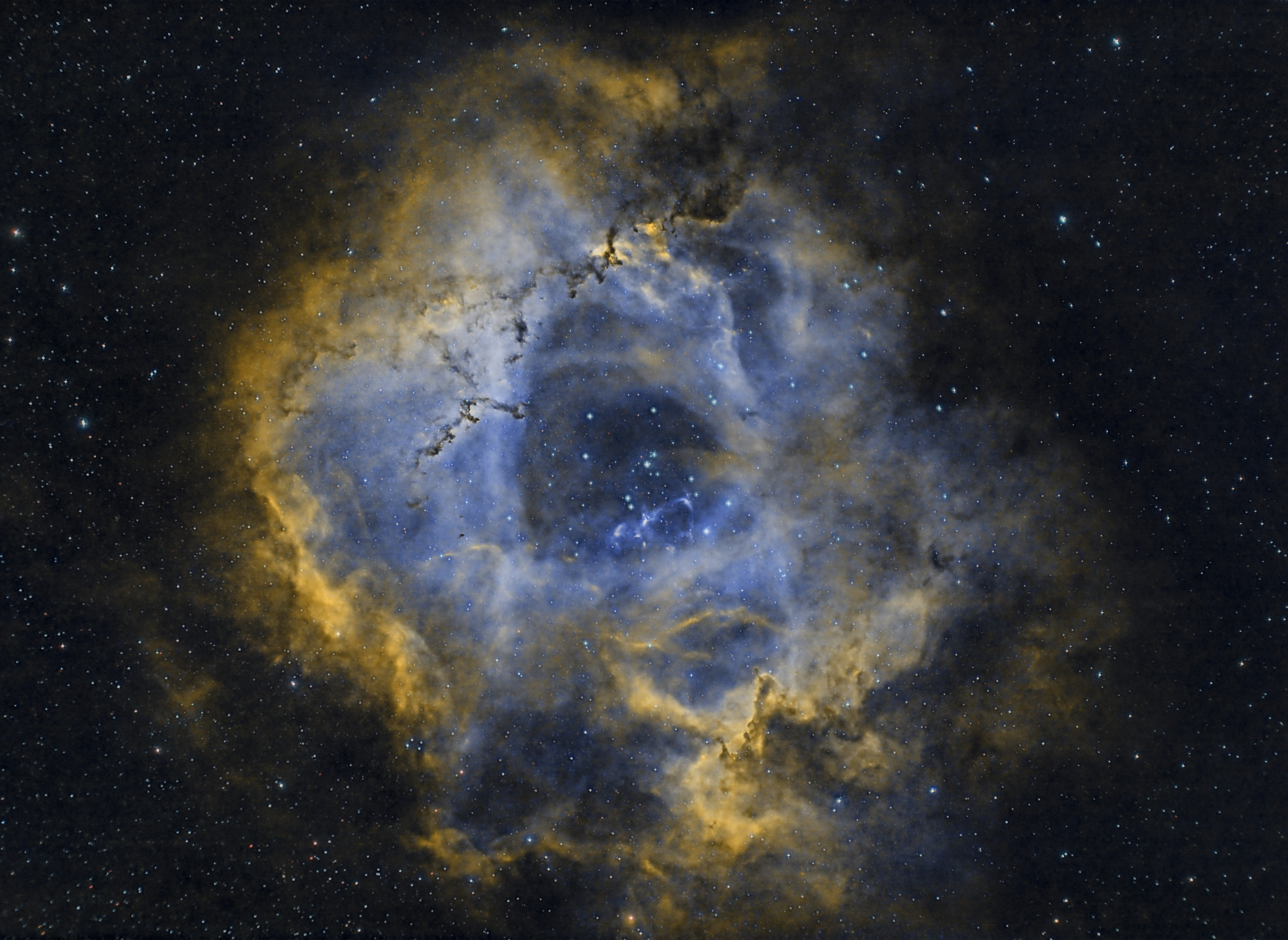Feb/Mar 2021
Imaging: ST120 achro, Canon 1000D 400 & 800 ISO, L-Enhance filterSubs: 63x180s 400ISO, 134x180s 800ISO (9.6h total), bias, darks, and flats
Software: NINA, Phd2, PixInsight
(Additional notes below)
Gallery
Notes
The Rosette Nebula is an HII region (i.e., region with a lot of ionized hydrogen) in a molecular cloud in the Milky Way. According to Wikipedia, the cluster and nebula are about 5000 LY from Earth and about 130 LY across. The radiation from the young stars excites the atoms in the nebula causing them to emit light radiation (this is why it is called an "emission nebula").I took these pictures over 6 nights from mid-February to early March 2021. This was the first image I took with my new L'Enhance filter which is a narrow-band filter that only passes three very narrow bands of the light spectrum. This allows great captures of emission nebula while blocking most of the heavy light pollution in my area.
This image was taken with my old ST120 telescope which typically produces bloated stars. However, the L'Enhance filter helped. And I also reprocessed the data using my latest software tools to further reduce the bloat. This time, I used the HOO color palette that gives this blue rose instead of the typical reddish/orange. Overall, I think the image looks quite reasonable even compared to those I took later with much better equipment.
